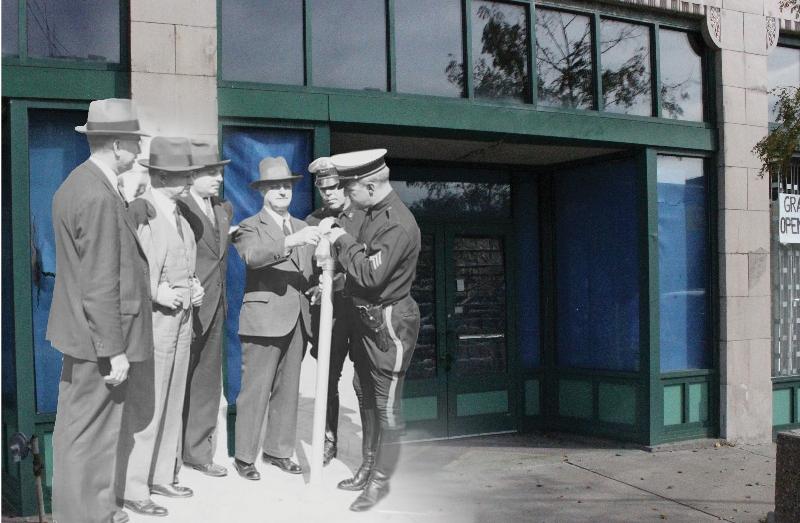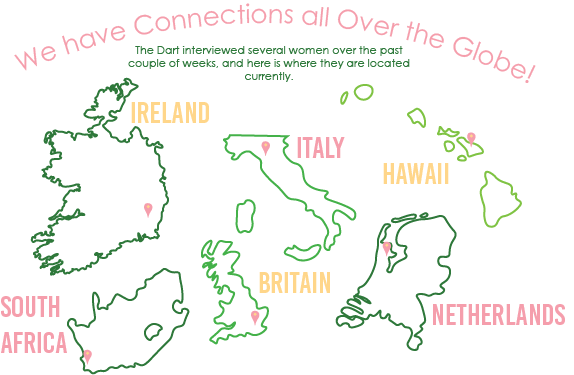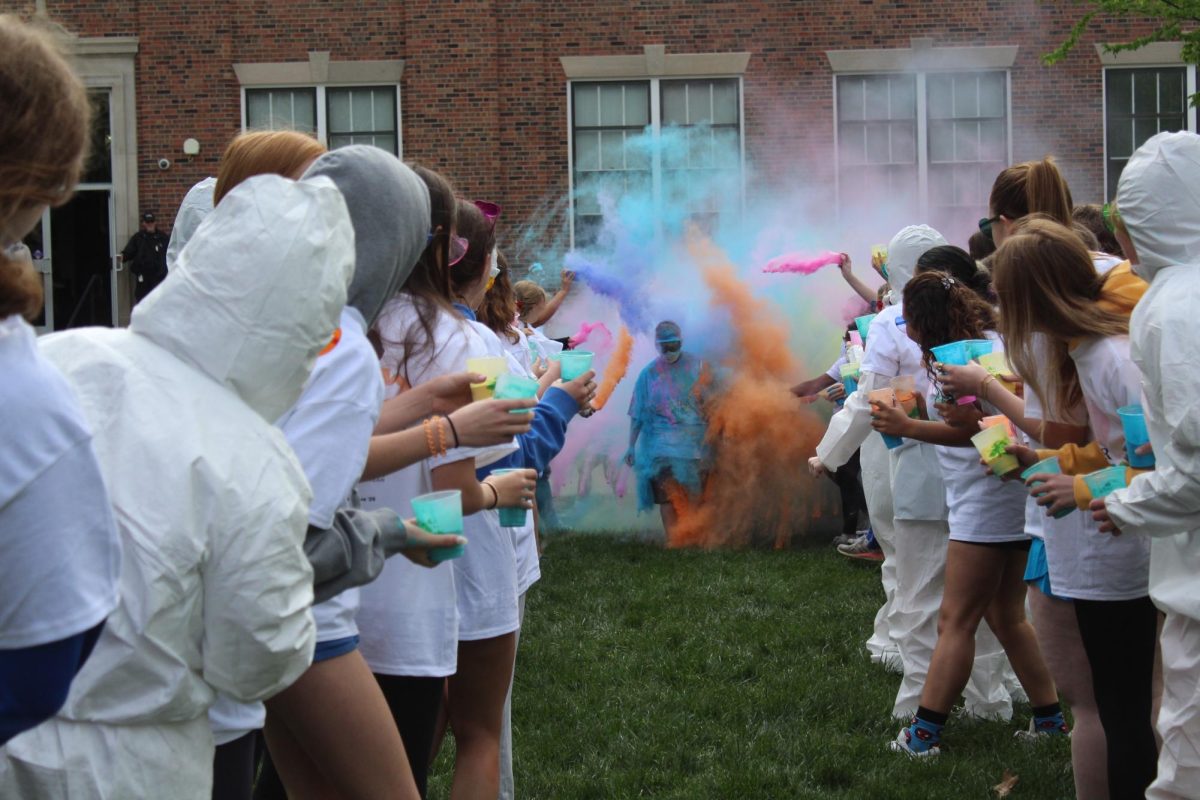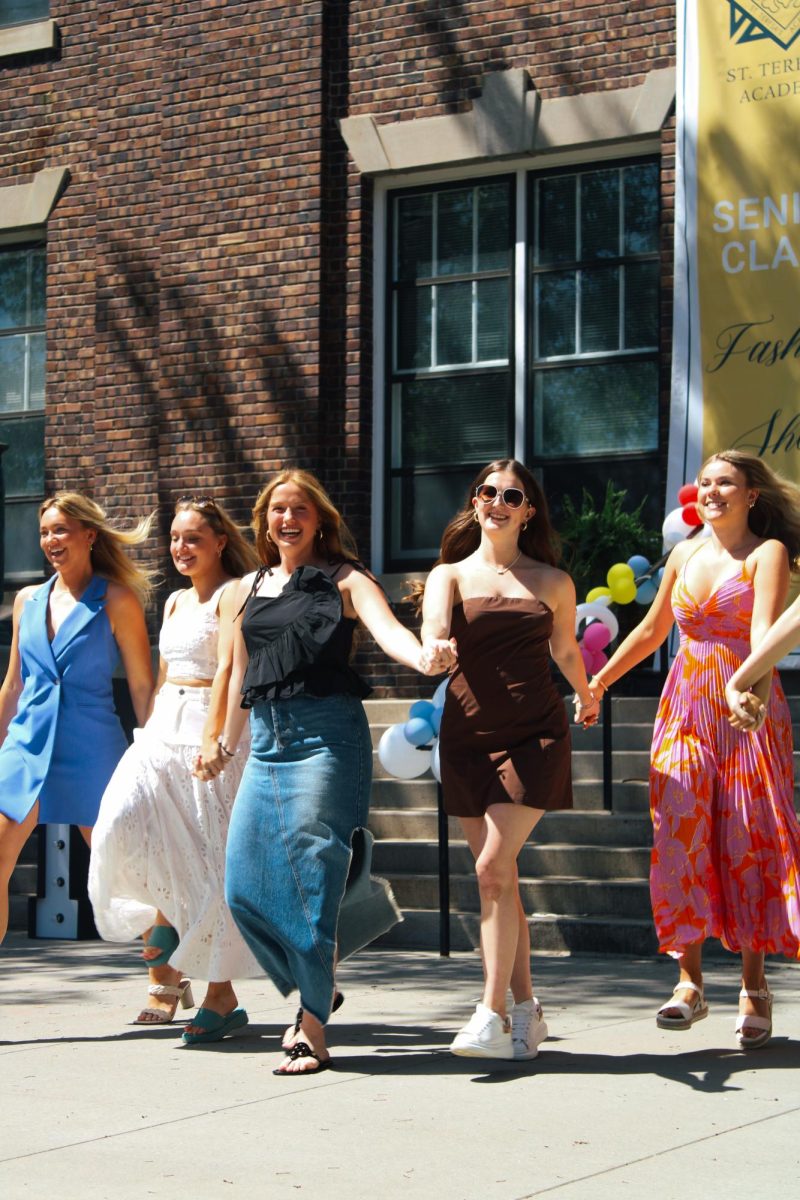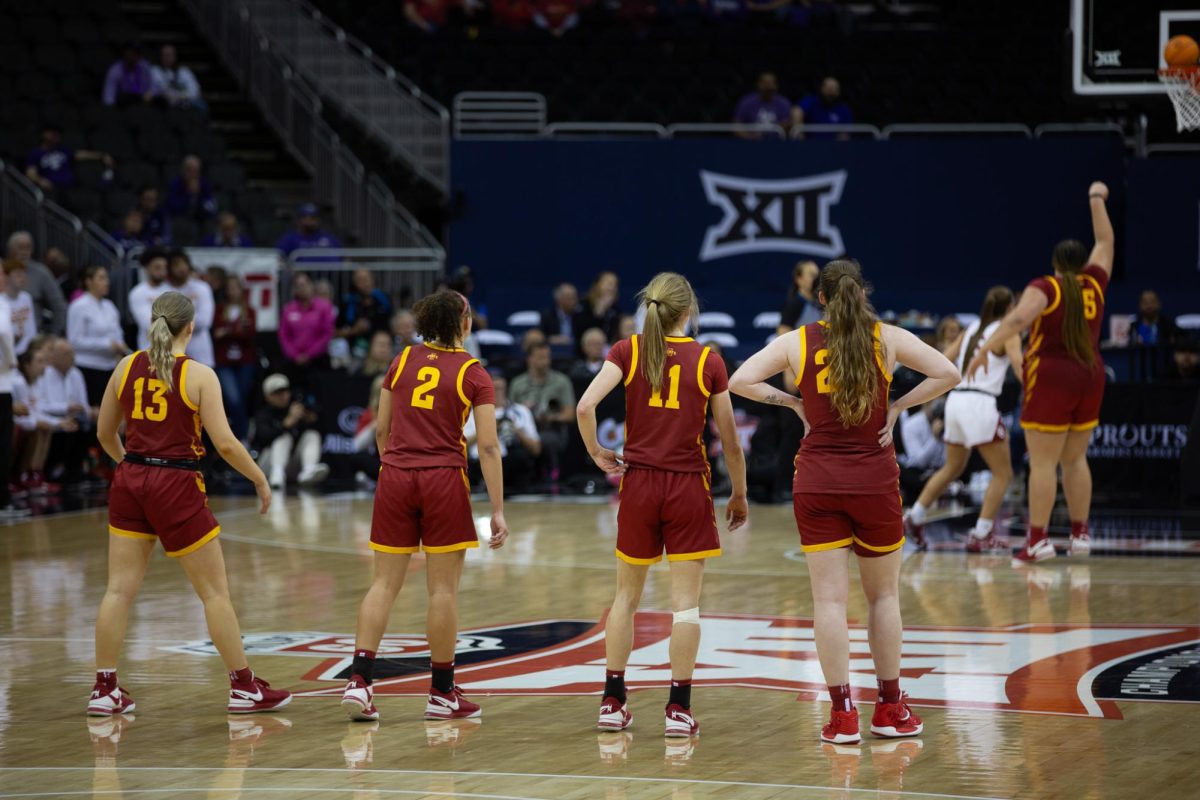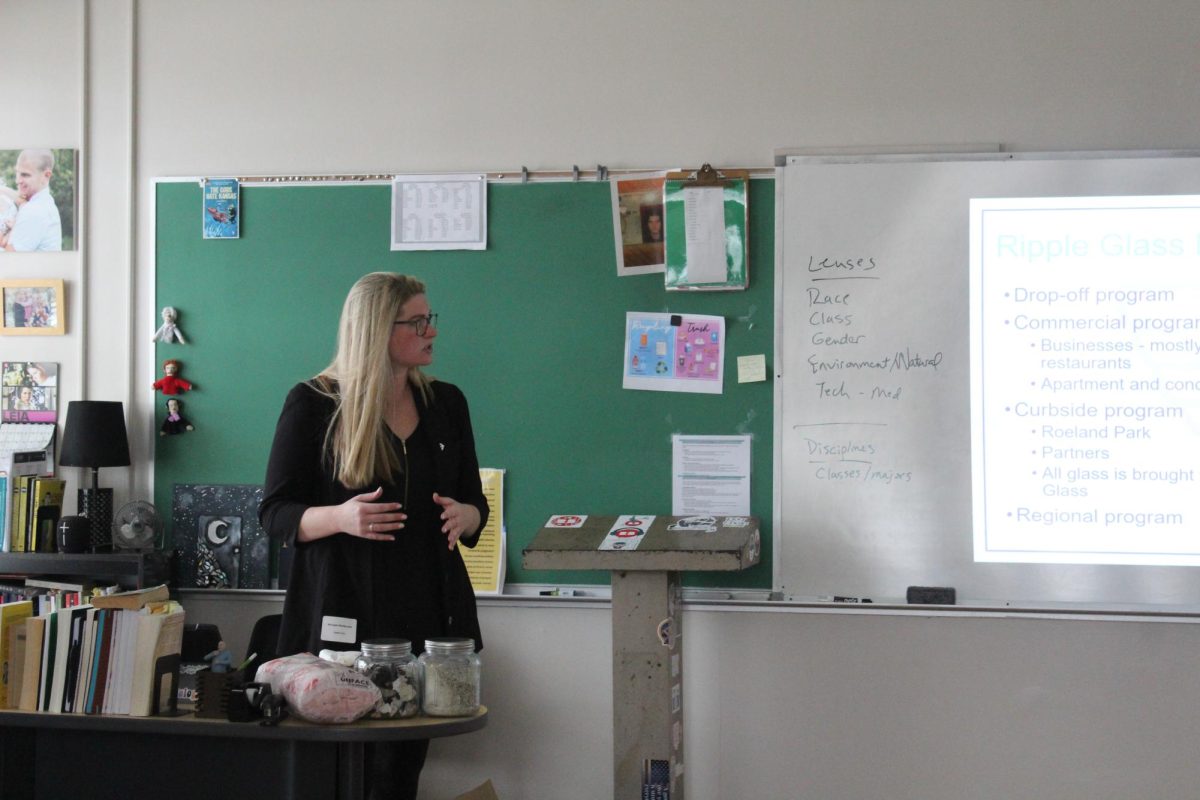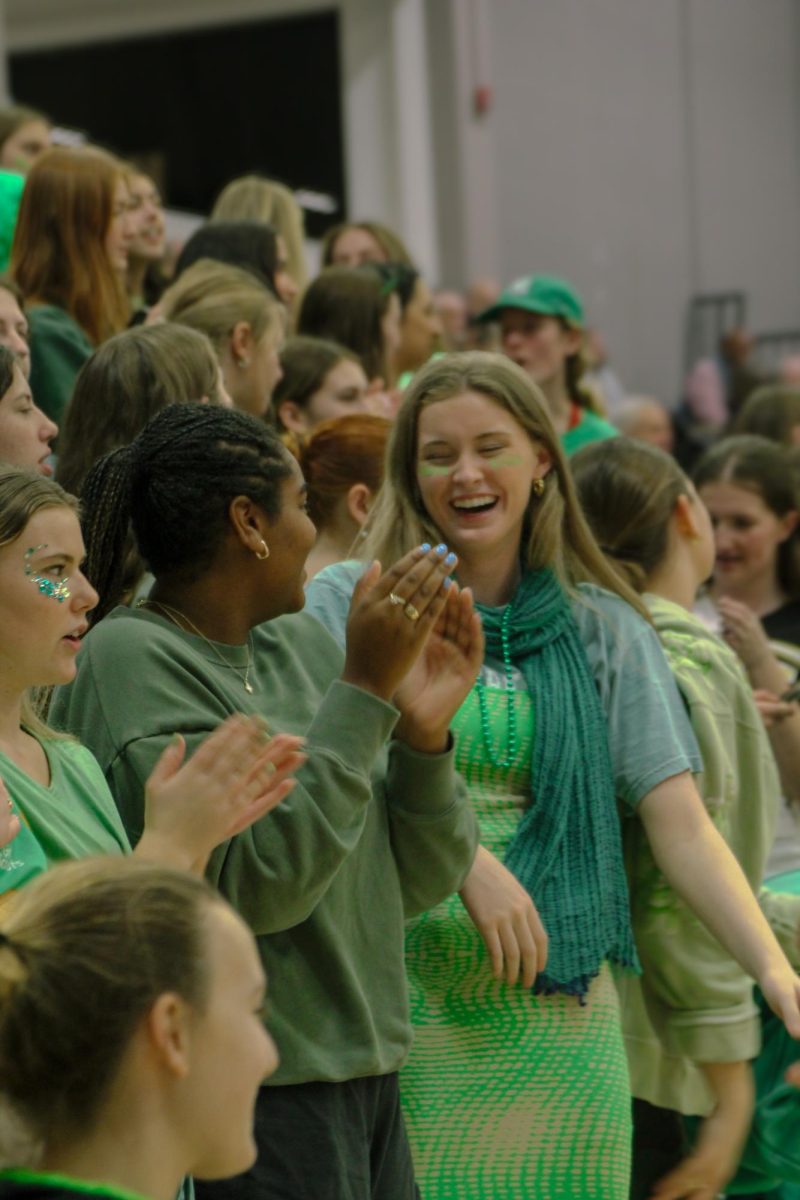by Anna Leach and Jordan Berardi, photo illustrations by Adrianna Ohmes and Anna Leach
[ezcol_2third id=”” class=”” style=””]
Children in their Sunday bests, women in buttoned frocks, gentlemen in pressed jackets and pants with pomaded hair hidden under hats and a man in a white suit on a motorcycle wait under the marquee of Fox Midwest’s Isis Theater. Still even more people spill into the brick street, queue to the doors continuing down the street past Vogue Hosiery and Walker’s Lunch diner. The crowd is not unexpected however; it is a Hollywood Premiere, a grand opening. The nightlife is buzzing.
This kind of excitement was not bizarre for 31st and Troost…in the 1940s.
However, in another decade, the area would radically shift.
[nggallery id=647]
History of racism
Today, the Isis Theater, Vogue Hosiery and Walker’s Lunch diner and so many others do not exist; crumbling remnants of the original architecture are the only reminders of the establishments. Worn and dilapidated, most are boarded up, though some very small independent shops have taken residence in front of the original buildings.
The area between 39th street and 79th terrace thrived in the 1920s and 30s. In the 1920s, there were 186 businesses on 31st and Troost and two blocks over, including two Fox Midwest Theaters, the Isis and the Apollo. Also, in the 40s, the Troost area was involved the KC Jazz scene; Musicians such as Mary Lou Williams, Count Bassie and Charlie “the Bird” Parker frequenting the nightclubs in the area.
But in 1950s, Troost became a legal line of segregation under Jim Crow Laws. JC Nichols, who was responsible for much of the city planning and who is most known for creating the Country Club Plaza, introduced restrictive housing associations which could choose which races were allowed to live in certain areas.
Other neighborhoods, such as Mission Hills, followed, writing statements into their contract similar to this one written in the property deed of Mission Hills: “…none of the lots hereby restricted may be conveyed to, used, owned, nor occupied by Negroes as owners or tenants…”
Blockbusting was also integral to white flight in Kansas City. Instead of using written word, a real estate broker would use scare tactics to force current residents to sell their houses at lower prices. At this time, the brokers would literally knock on the doors of caucasian residents and inform them of the African American residents and try to convince them the minority tenants would bring up crime rates and reduce the value of their property, regardless of whether this information was true.
From here, the area devolved, losing money as people left what had previously been known as the “city within the city.”
“It’s where I live, it’s where I grew up”
Today, the east side of Troost, stretching from Troost to Blue River Road, between 39th street and 78th terrace, is 86 percent black and seven percent white, with six percent of residents being a race other than black or white.
The west side of Troost, ranging from Troost to State Line Road between 39th street and 78th terrace, however, shows opposite statistics. The west side’s population is 82 percent black, seven percent black and 11 percent being a race other than black or white. Economically, the west is also drastically different from the east, with residents on west side having an average income of $105,300 compared to the east side of Troost having an average household income of $33,400 according to the 2010 census. The crime rate soars, too, going from fifteen homicides in the last five years (about 1.9 per 100,000 residents annually) on the west to 110 homicides in the last 5 years (about 36 per 100,00 residents annually) on the east.
When the Dart polled STA students about their impressions of Troost Avenue and the surrounding streets, responses included “very urban,” “sketchy” and “run-down.” But these responses come from students living west of Troost Avenue, where the majority of STA students live.
Sophomore Amanda Wesche moved to Swope Park at age three, her parents having fallen in love with their current house. According to Wesche, living East of Troost is living in a demographic that those West of Troost are not used to, where being white is a minority.
“Because so many people on the other side of Troost are black, I have to go to Brookside’s CVS to get my hair products because all the stuff here [is] directed toward black women,” Wesche said.
Available community resources are also not the same, according to Wesche.
“Kansas City was one of the first places to get Google Fiber they wanted to advertise it in the nice neighborhoods like Brookside and Waldo but they didn’t even put any signs for Google Fiber in my neighborhood or anything about it,” Wesche said.
While she said she’s not uncomfortable discussing where she lives to her peers, Wesche said the location of her house has caused some minor complications in the past.
“I live so close to the zoo, that it’s not a big deal, but I’ll have friends that want to come over but their parents don’t want them coming over because of the area I live in,” Wesche said. “People can’t hang out with me, I have to go hang out with them.”
Wesche said she does have to take some safety precautions, for example, not taking the bus by herself or going for walks or runs around Swope Park. All in all, however, it’s not as dramatic as some may believe, according to Wesche.
“It is different because the majority of people are black, but it’s not like we’re constantly roaming around the streets,” Wesche said. “Where I live, there’s not a lot of violence. I mean, yeah, okay. there’s a lot of sirens and maybe a couple of gunshots. That’s it.”
The neighborhood feel is what Wesche and her family have missed most, especially as many family friends still live in the Brookside area Wesche said, so choosing STA for high school was a logical fit. But according to Wesche, that still doesn’t make her dislike where she lives.
“I [tell my friends] ‘it’s fine. nothing’s ever happened’ [to my friends who are concerned],” Wesche said. “It’s where I live. It’s where I grew up.”
Sophomore Alex Davis, who has lived on Paseo for about five years, shares a similar sentiment. For Davis, the move was less about a dream house, and more based in practicalities of her family’s lifestyle.
“I wouldn’t change where I live just because we are financially stable where we’re at,” Davis said. “This way we have more money for things like education.”
Davis also said she is not overly worried about the area, despite hearing other STA students who live on the West side of Troost occasionally say “Oh, you live on that side” or “Oh you live where all the stuff happens.”
“It’s pretty safe in general,” Davis said. “There aren’t good people but there also aren’t bad people. I like how it is.”
Common misconceptions about neighborhoods East of Troost come from a societal problem rather than individual prejudice. Technology and other communication blocks are at the heart of the problem, according to Davis.
“Over time, people just start to grow more and more distant,” Davis said. “That distance starts to grow assumptions about one another, most likely in a negative way [creating] a divide between people.”
In the end, for Davis, it comes down though to how people look at others in their world.
“I see it as people not understanding one another enough,” Davis said.
[/ezcol_2third] [ezcol_1third_end id=”” class=”” style=””]
Troost’s timeline
a brief outline of the history of Troost Avenue
1700s – What today is recognized as Troost Avenue used to be the canoe trail for the Osage Nation. However, in 1808, most of the Osage lands were sold.
early to mid 1800s – From 1823-1865, the area from 21st Street to 31st Street and Locust to Vine was a plantation owned by Rev. James Porter. The forest was eventually cleared, everything north of 27th Street becoming livestock pastures. At this time, a cornfield, fruit orchard and lake from a natural spring were also present.
late 1800s to early 1900s– After the Civil War, Porter began selling land of the plantation, making a real estate fortune. Buyers of these plots were incredibly wealthy and built enormous mansions, leading this block to be nicknamed “Millionaire’s Row.” At it’s height, out of the 23 of the millionaires in Kansas City in 1901, one fourth lived on this row. In 1900, The South Central Business Association, which controlled from 27th Street to 36th Street, Gilham to Michigan, was formed. They made this area what was known as KC’s first outlying shopping center.
1920s-1940s– During this period of time, the Troost area was known as the “city in a city,” with Linwood and Troost as the “crossroads” or “heart of America.” There 186 businesses within two blocks of 31st and Troost as well as two theaters. The Fox Midwest establishments known as Isis and Apollo together housed about 13,000 – 15,000 patrons a week. Walt Disney worked in KC during this period is well. Although he started working at the KC Star, he was fired, and so started the Laugh-O-Gram Films company in the upstairs office of a building at 31st and Forest. At its peak, Disney had 12 animators employed, including Rudy Ising, Hugh Harmon and Ub Iwerks. Mickey Mouse was also born during these years, inspired by a mouse that lived in the building. Other jazz legends, such as Charlie “the Bird” Parker, Mary Lou Williams and Count Basie , frequented the area as well, enjoying the music, alcohol, gambling and dancing that could be found at various nightclubs on Troost and other nearby streets.
1950s-late 1960s– In the 1950s, Troost became a legal line of segregation under Jim Crow laws. Restrictive housing association policies began being enforced, and blockbusting (a way of using scare tactics to get non minority populations to sell their houses cheaply) emerged. As a result, many businesses closed down, and the area began to lose people and money. Citizens responded with protests and riots as the Civil Rights movement progressed, leading Kansas City to fall under martial law in 1968. The south Central Businesses Association, which many believed help keep the area alive, disbanded in 1969.
early 1970s-late 1990s– The area continues to slump economically and the remnants of the Jim Crow laws are clear; the population is majority African Americans with, on average, lower incomes. The result is a “ghost town.”
2000 – present – Through organizations such as Restoration Services, Operation Breakthrough and Communities Creating Opportunities and programs like Tulips on Troost, the gentrification begins. Individuals in and outside of the Troost community start working to restore the area.
“We Are Superman”
the current restorations of Troost Avenue, in documentary form
Two years ago Kevin Bryce began a project that would become the documentary “We Are Superman.” The film mostly tells the story of the reconstruction of the Troost area through the eyes of some of the leaders of the gentrification movement, including Molly Fleming, an STA alumnae. Originally, according to Bryce, the movie was going to be a 25 minute short, however, quickly it became a 45 minute movie, and finally, after another round of editing, a full length, one hour feature; as the plans progressed, it became clear there was more story to be told.
“Routines and habits [of a community] are important to recognize,” Bryce said. “There’s no reason to question [the status quo] if you have never known another option.”
As an outsider, specifically from Canada, Bryce said he knew he wanted to make the film after realizing how segregated Kansas City is. The first time he picked up on the divisions was on his first ride on the Troost bus; he was the only white person.
“I didn’t get it,” Bryce said.
The film was first released in 2010 and has since been screened only a handful of times, though it was also played on KCPT. Bryce and producer Christopher Cook said they now want the movie to go past Kansas City and inspire more people to get involved, and ultimately, change to happen.
“We Are Superman” was released to DVD and streaming on iTunes Oct. 10.
[/ezcol_1third_end]



